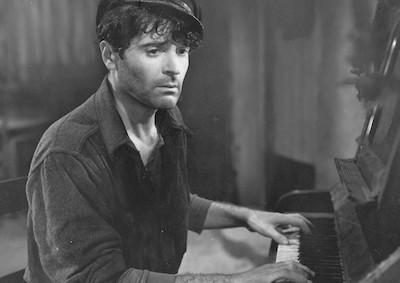Access every screening in the UCLA Festival of Preservation with a $50 pass.
Krakatoa (1933)
Preservation funding provided by the Academy Film Archive.
“First a great eruption, then a tidal wave of critics’ praise,” is how Educational Films Corporation of America ballyhooed Krakatoa in the pages of The Film Daily after it took home an Academy Award for this short subject adventure in 1934. When Krakatoa, the mythic—and deadly—volcanic island in the the Sunda Strait began rumbling again in the summer of 1931, independent producer Joe Rock, dubbed by International Photographer, “one of the keenest minds and most wide awake independent producers in the motion picture industry,” raced to the scene with a camera crew, a boat and two seaplanes to film the impending undersea explosions. Contemporary reports suggested Rock lost one of his planes when volcanic ash set one of its wings on fire with much of the press lauding how close he and his crew were able to get to the towers of ash, steam and rock that roiled the ocean’s surface.
35mm, b/w & color (tinted), 25 min. Production: Joe Rock Productions, Educational Films Corporation of America. Distribution: Fox Film Corporation. Producer: Joe Rock. Editor: Forrest Izard. Screenwriter: J.H. Bekker. With: Graham McNamee (Narrator).
Restored by UCLA Film & Television Archive in conjunction with the Academy Film Archive. Laboratory services by YCM, Audio Mechanics, Simon Daniel Sound, DJ Audio, Inc.
Voice in the Wind (1944)
Preservation funding provided by The Film Foundation and The George Lucas Family Foundation.
Produced independently by Rudolph Monter, a Jewish refugee lawyer from Prague who became a minor film producer in Hollywood, and written by Friedrich Torberg, one of Austria’s most famous writers, Voice in the Wind, like Casablanca, follows the fate of refugees from war-torn Europe. Francis Lederer plays a Czech concert pianist who was persecuted for playing a banned song, became a refugee, and was ultimately trapped on the fictional Caribbean island of Guadalupe, after almost being killed by human smugglers who promise safe passage to the United States. He pines after his wife, from whom he was separated in the chaos of the Nazi invasion of Prague, never realizing that she is withering away only miles away from him on another part of the island. He slowly descends into madness, no longer remembering his name, endlessly playing Smetana’s “The Moldau,” the unofficial anthem of Czech lands.
Heavily influenced by German expressionist lighting techniques, Voice in the Wind thematizes the plights of refugees both then and today: the dispossession of homeland, the separation of families, the loss of nationality and identity. A strong sense of melancholy pervades the sets, constructed in the rented Talisman Studios by former UFA set designer Rudi Feld. Made for under $100,000, this B-film belies its low-budget origins, offering strong performances and a narrative, which, through flashbacks within flashbacks, creates a sense of disorientation, much like that felt by its characters. The film was nominated for Academy Awards for Best Music and Sound.
DCP, b/w, 85 min. Production: Arthur Ripley-Rudolph Monter Productions. Distribution: United Artists. Director: Arthur Ripley.Producer: Rudolph Monter. Screenwriter: Frederick Torberg. Adapted from an original story by Arthur Ripley. Cinematographer: Dick Fryer, ASC. Music: Michel Michelet. Art Director: McClure Capps. Cast: Francis Lederer, Sigrid Gurie, J. Edward Bromberg, J. Carroll Naish, Alexander Granach.
Restored by UCLA Film & Television Archive in conjunction with The Film Foundation. Preserved from a 35mm acetate print, a 35mm nitrate composite Dupe Negative and a 16mm Dupe Picture negative. Laboratory services by Fotokem, Roundabout Entertainment, Audio Mechanics, DJ Audio, Inc. Special thanks to Cohen Film Collection, Tim Lanza, the Library of Congress.






 Mobile Navigation
Mobile Navigation

